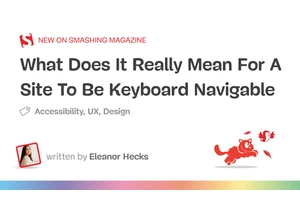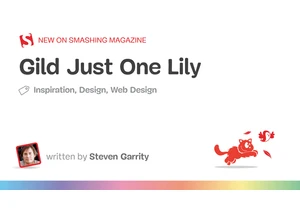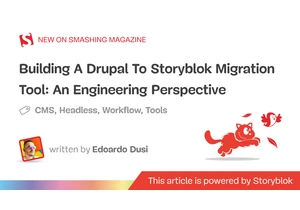Have you ever wondered what happened after CSS3? It’s common knowledge that we never saw CSS4 come after it, yet we have a plethora of new features that have no similar way of defining when they were introduced. The W3C CSS-Next community group is actively searching for better approaches for how we describe the evolution of CSS over time and identify feature sets as effectively as we did with CSS3 way back in 2009 — and you can help. https://smashingmagazine.com/2024/08/time-to-talk-about-css5/
Zaloguj się, aby dodać komentarz
Inne posty w tej grupie

Keyboard navigation is a vital aspect of accessible web design, and a detail-oriented approach is crucial. Prioritizing keyboard navigation prioritizes the user experience for a diverse audience, exte

While there’s no definitive playbook for building an accessibility culture, Dani shares lessons from his experience in shaping it through habits rather than mandates. https://smashingmagazine.com/2025

Dark mode isn’t just a trendy aesthetic. It’s a gateway to more inclusive digital experiences, but only if designed thoughtfully. Discover how to craft dark modes that don’t just look good but work fo

“Gilding the lily” isn’t always bad. In design, a touch of metaphorical gold — a subtle animated transition, a hint of color, or added depth in a drop shadow — can help communicate a level of care and

Animation makes things clearer, especially for designers and front-end developers working on UI, prototypes, or interactive visuals. Manim is a tool that lets you create smooth and dynamic animations,

When passion for accessibility meets business indifference, what bridges the gap? Gloria Diaz Alonso shares how she turned frustration into strategy — by learning to speak the language of business. ht

In this article, Edoardo Dusi shares the engineering and architectural choices made by the team at Storyblok and how real-world migration challenges were addressed using modern PHP practices. https://
